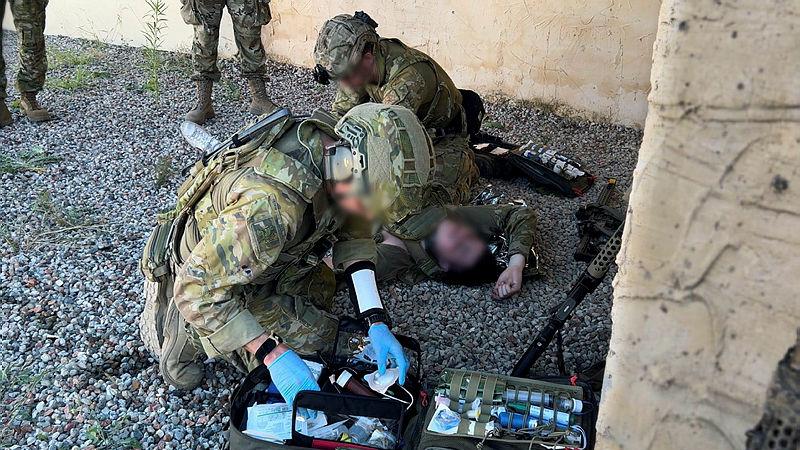
On 29 January 2019 the Federal Government commenced a trial of the Cashless Debit Card (CDC) in the Hinkler region, which includes Hervey Bay and Bundaberg. The broad objectives of the trial are to decrease substance abuse and gambling, as well as promote ‘socially responsible behaviour’. The Explanatory Memorandum for the Bill introducing the CDC in the Hinkler region emphasised the call of ‘community stakeholders’ for the card to address ‘high youth unemployment and intergenerational welfare dependence as well as the high use of alcohol, drugs and gambling.’
Despite government rhetoric of a community backed CDC trial in the Hinkler region, empirical evidence presents a more complex picture of stakeholder perspectives. In the recently released government commissioned qualitative report on the CDC in the Hinkler region, undertaken by the Future of Employment and Skills Research Centre (FESRC) at the University of Adelaide, a more nuanced view of Hinkler stakeholders emerges. This report is based on 74 stakeholder interviews and 66 interviews with people who were or were about to be put on the card, with many interviewees reporting ‘that they were opposed to the trial of the CDC.’ Importantly, the most frequently mentioned problems were about the limited ‘labour market’ and ‘lack of employment opportunities’ within the Hinkler region.
This qualitative report shows that while some stakeholders wanted the CDC in their community, others were very much opposed to the introduction of the card. The views highlighted in the report show that there were sensible reasons why many stakeholders were concerned about the CDC. Those opposed to the CDC considered that the card would be socially divisive, would fail to address the underlying causes of substance abuse for people with addiction issues, and would do nothing to generate desperately needed jobs in the region.
The qualitative report also reflects important cardholder concerns about increased shame and stigma brought about because of the CDC program, with many cardholders reporting ‘that they were reluctant to use their card as they feared being looked down upon or’ targeted with ‘negative comments by retail and hospitality staff, and also their fellow customers.’ For numerous CDC holders, their worst fears on this front have been realised, as confirmed by other independent academic research.
The Federal Government’s updated Bundaberg and Hervey Bay CDC website states that the CDC was introduced because of ‘calls for the card from key stakeholders in the region to address social issues such as high youth unemployment and intergenerational welfare dependence’ (emphasis added). This tweak raises further questions. Who was considered to be a ‘key’ stakeholder? Which stakeholder views were deemed irrelevant and why? How did the government decide which stakeholder voices to listen to and which to ignore in their consultation process? Does ‘key’ stakeholder merely correlate with ‘elite’ stakeholder? The diverse stakeholder perspectives captured in the FESRC qualitative report suggest that there was strenuous support by some and equally rigorous opposition by others to the introduction of the CDC. Interviews with CDC holders undertaken as part of independent academic research indicate a lack of consultation with those most likely to be directly affected by the program.
Framing the introduction of the CDC as a response to community calls for the card has always been problematic, as it reflects homogenising views of community cohesion that square poorly with the complexities of social stratification operating within trial sites. In her seminal work Justice and the Politics of Difference, Iris Marion Young (2011: 227) explains that ‘the ideal of community denies and represses social difference, the fact that the polity cannot be thought of as a unity in which all participants share a common experience and common values.’ In short, the language of ‘community’ can obfuscate the experience of exclusion and domination.
My field work in the Hinkler region, undertaken as part of the ARC Discovery Project Conditional Welfare: A Comparative Case Study of Income Management Policies (DP180101252), confirmed that Hinkler is a diverse rather than homogenous community. Social stratification within Hinkler was evident during multiple field work trips to the region, where I observed incidents reflecting social tension about the CDC program. For example, during CDC protests in Bundaberg and Hervey Bay I observed some passers by shout from their cars at protestors: ‘get a job you bludgers!’ The tragic irony was that many of these people in receipt of social security who were protesting against the CDC were already employed – they were under-employed rather than unemployed. They were not unwilling to work but were experiencing a shortage of adequately paid employment opportunities in the region. Nevertheless, their status as government income support recipients attracted criticism from some segments of the community.
During my Hinkler field work, some elite stakeholders who wanted the CDC introduced evidently saw themselves as part of a cohort of ‘normal’ community members, in contrast to those in need of social security payments. The latter were described as living an entitled existence in defiance of community norms, as the following stakeholder interview highlights:
Facilitator: What do you think the community thinks about people who are subjected to the cashless debit card?
Interviewee: Most people who I deal with, hang out with et cetera, think that people should get out and have a go. I think the age of entitlement is really pissing a lot of us normal people off; the real people, I guess. If that makes sense.
Facilitator: Mm hm.
Interviewee: I think the silent majority will think that it should go further. I think the silent majority think that there should be protesting, and I think the silent majority wants more accountability with those who are on welfare.
This elite stakeholder interview is revealing. It evidences a perplexing belief that it is possible to ascertain precisely what the ‘silent majority’ think – despite their silence. It also ascribes a positive value to homogeneity within the community, reflected in the reference to ‘us normal people’. The picture of normality portrayed in this account is one of reliance on paid employment, with those experiencing greater socio-economic security through sufficient paid employment described as ‘the real people’. Yet adequately paid secure employment is increasingly scarce. So where does this leave people subject to the CDC? They are to be constrained under the CDC indefinitely, even if this creates significant problems for them in terms of basic bill payment, because obtaining an exit from the CDC is proving difficult for the majority of applicants.
Although there is no evidence that the CDC achieves the government’s expressed aims when applied across broad social security cohorts, and can in fact cause further harm to numerous participants, Minister for Families and Social Services Anne Ruston announced that all CDC trials would be extended until 31 December 2020. However, the opportunity cost of funding the CDC is significant. Arguably these funds would be better deployed in generating jobs for those experiencing unemployment, under-employment, and socio-economic stress due to the COVID-19 pandemic, and in providing a dignity promoting social security system. If ever there was an opportune time to start re-thinking perceptions of normality it is now.







